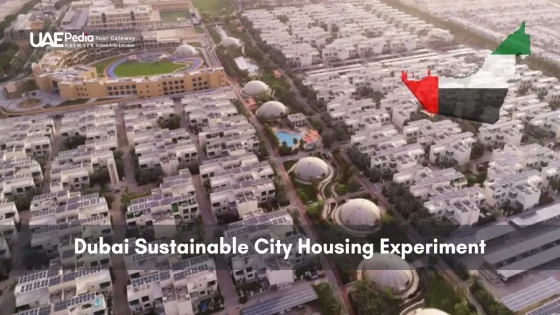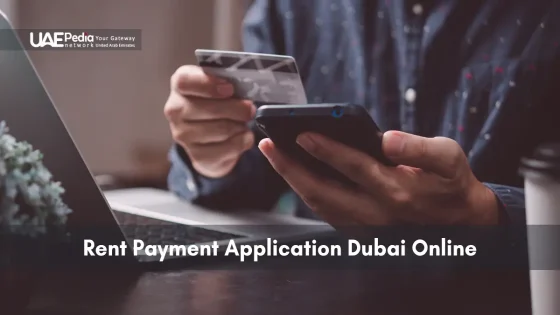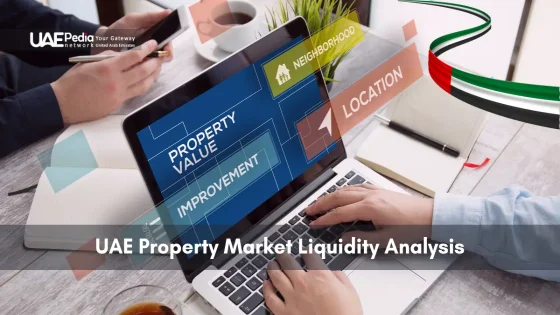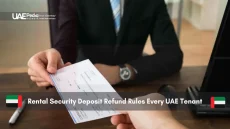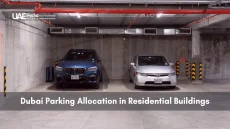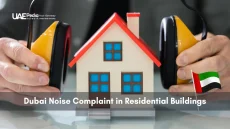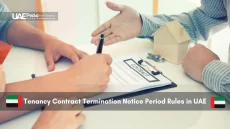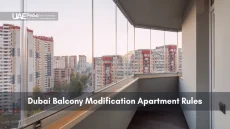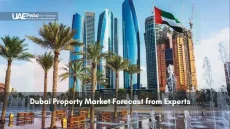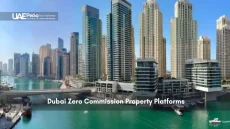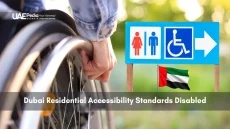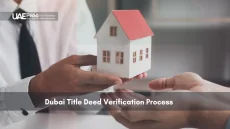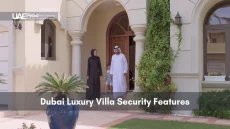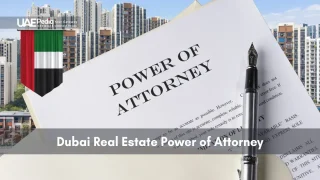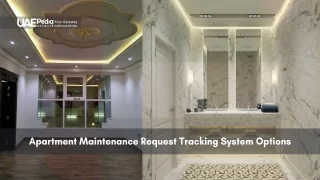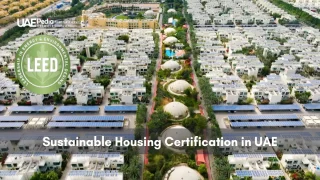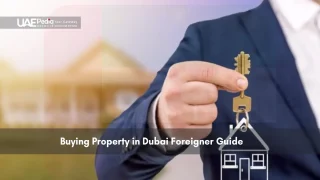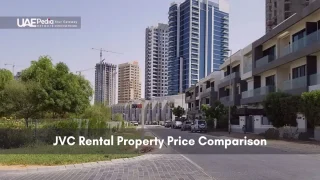What if a neighborhood could produce more energy than it uses—even in 120°F desert heat? This isn’t a futuristic concept but the reality of a groundbreaking project reshaping how we think about modern communities. Built by Diamond Developers, this eco-focused neighborhood blends sleek villas, solar-powered infrastructure, and lightweight construction to tackle extreme climates head-on.
The development’s secret lies in its fusion of high-tech design and everyday practicality. Architects swapped traditional concrete for materials that slash energy use by 50%, while rooftop panels generate enough power to offset consumption. Residents enjoy lush green spaces irrigated with recycled water—a stark contrast to the surrounding dunes.
But it’s not just about technology. The layout encourages walking over driving, with shaded pathways connecting homes to urban farms and community centers. Every detail, from waste management systems to building orientation, reflects a “circle of life” approach to sustainability.
The Dubai Sustainable City Housing Experiment demonstrates a residential community that generates 130–150 % of its daily energy requirements through integrated photovoltaic arrays and lightweight aerated concrete panels, reducing building envelope heat gain by up to 50 %. Roof-mounted solar canopies feed a local microgrid managed by AI-driven energy controllers, which balance real-time production and consumption to minimize reliance on external power sources even during peak 120 °F conditions. Materials selection prioritizes 60 % recycled content and prefab construction methods that cut assembly time by roughly 30 %.
Water management employs a closed-loop system that treats greywater and condensate to irrigate 75–90 % of landscape demand, while stormwater is harvested in subsurface reservoirs. Car-free zones and electric buggy shuttles, supported by over 200 EV charging stations powered by surplus solar, reduce vehicular CO₂ emissions by over 80 % relative to conventional suburban layouts. Mixed-use planning places daily amenities within a seven-minute shaded walk, reinforcing passive cooling strategies and minimizing mechanical ventilation loads.
- Discover how solar innovation meets desert survival tactics
- Explore the balance between luxury living and eco-responsibility
- Learn about closed-loop systems that recycle 90% of water
- See why this model matters for future urban projects worldwide
Understanding the Concept Behind Dubai’s Sustainable City
Imagine stepping into a neighborhood where every element works in harmony—like a desert flower thriving against the odds. This vision drives the blueprint for cutting-edge eco-communities, blending innovation with livability. At its core, sustainable urban living means creating spaces that meet today’s needs without compromising tomorrow’s resources.
Defining Sustainable Urban Living
Think of it as a dance between technology and daily life. Solar panels here don’t just sit on roofs—they power homes while shading them from relentless sun. Energy-efficient windows slash cooling costs, and lightweight facades reflect heat like a mirage. Diamond Developers, the minds behind this project, prove eco-friendly methods can coexist with modern comforts.
Key Environmental and Social Goals
The aim? To flip the script on resource use. Recycled water systems nourish urban farms, while electric buggies zip through car-free zones. Schools and shops sit within walking distance, fostering connections between neighbors. As one resident put it: “We’re not just saving energy—we’re building relationships.”
This approach tackles two challenges at once: reducing energy consumption and strengthening communities. Closed-loop systems recycle 90% of water, and mixed-use zones mean fewer vehicles clogging roads. It’s a living lab showing how cities worldwide can balance growth with ecological care—no magic required, just smart design.
Read More:
In-Depth Look at the Dubai Sustainable City Housing Experiment
Picture a blueprint where every home acts like a living organism—breathing in sunlight, exhaling clean energy. This vision drives a Middle Eastern development that’s rewriting real estate rules. Architects here didn’t just build houses; they engineered ecosystems where rooftops work overtime and walls think for themselves.
Core Objectives and Innovations
The project’s three pillars? Slash energy use, reinvent water systems, and grow food locally. Lightweight panels replace heavy concrete, cutting cooling needs by 40%. Rooftop solar arrays generate 150% of daily power demands—extra juice feeds shared spaces. One resident joked: “Our buildings sweat electricity!”
Integration of Eco-Friendly Technologies
Walk through the community, and you’ll spot tech hiding in plain sight. Vertical gardens double as natural AC units, while sensor-controlled irrigation uses 70% less water than traditional methods. The real showstopper? Glass-domed urban farms producing 30+ crop varieties year-round.
| Feature | Traditional Approach | Innovative Solution |
|---|---|---|
| Energy Generation | Grid-dependent | Solar canopies + wind towers |
| Water Use | Municipal supply | Closed-loop recycling |
| Building Materials | Concrete-heavy | Lightweight aerated panels |
These choices create ripple effects. Narrow streets shaded by solar panels keep sidewalks cool, encouraging neighborly strolls. Shared composting hubs turn kitchen scraps into garden gold. It’s proof that green living doesn’t mean sacrificing comfort—it’s about smarter resource dances.
Historical Context and Development Timeline
How do you build a green oasis in a desert? The answer began taking shape in 2013 when forward-thinking planners broke ground on a community that would redefine eco-conscious living. Over four sweltering years, this ambitious project transformed barren land into a blueprint for modern sustainability—completing its final phase by 2017.
Project Initiation and Key Milestones
Construction crews faced twin challenges: 120°F summers and a tight timeline. Their solution? Prefab walls with aerated concrete cut assembly time by 30%, while angled rooftops maximized shade. Solar arrays went up in 2015—enough to power 500 homes before the first residents arrived.
The pace stunned even experts. Community hubs like urban farms and swimming pools materialized in months, not years. “We didn’t just construct buildings—we engineered ecosystems,” notes a Diamond Developers project lead. By 2016, car-free zones let neighbors reach markets or schools in 7 minutes flat via shaded walkways.
- 2014: Pilot homes achieved 60% energy independence
- 2015: Recycled water systems irrigated first green spaces
- 2016: Carbon footprint dropped 42% vs traditional developments
- 2017: 90% waste diversion rate through community composting
Today, this urban development stands as proof that rapid growth and environmental care aren’t mutually exclusive. Its real estate model—where every balcony faces shared gardens—shows how cities worldwide can balance progress with planetary health.
Diamond Developers and Their Vision for Sustainable Living
Imagine a developer where profit and planet aren’t rivals but partners in progress. That’s the story of Diamond Developers, the private firm rewriting real estate rules across the Middle East. Since 2003, they’ve blended commercial savvy with eco-innovation, proving green living can thrive even in harsh climates.
Background of the Developers
Founded by visionaries tired of cookie-cutter towers, this company treats buildings as living systems. Their secret? A team of architects, engineers, and community planners who ask: “How do homes nourish both people and ecosystems?” The answer led to projects where solar panels outnumber parking spots and gardens grow where concrete once ruled.
Innovative Approaches in Real Estate
Forget heavy construction—their villas use aerated concrete blocks that weigh 50% less than traditional materials. Rooftops double as power plants, with photovoltaic panels meeting 100% of household needs. Shared electric buggies glide past local markets stocked with urban farm produce, creating neighborhoods that feel like villages.
But the real magic? Their closed-loop lifestyle. Rainwater irrigates date palms, while recycled plastic becomes playground equipment. As one resident shared: “We’re not just saving energy—we’re redefining what community means.” From car-free zones to zero-waste cafés, every detail fuels a vision where luxury and responsibility coexist.
Sustainable Construction Practices in Dubai
What if walls could sweat out heat instead of trapping it? Builders here cracked the code using materials that laugh at desert temperatures. Lightweight aerated concrete panels form the backbone—50% lighter than standard blocks yet twice as insulating. Combined with triple-glazed windows, these facades slash cooling needs before AC even kicks in.
Green Building Techniques and Lightweight Facades
Work crews stacked prefab panels like LEGO bricks during assembly. Each layer includes hidden perks: recycled aluminum frames deflect sunlight, while cavity walls circulate air like natural breezes. “Our walls work smarter, not harder,” says a site manager. Advanced insulation wraps buildings like a thermal blanket—cutting heat transfer by 62% compared to conventional designs.
| Factor | Traditional Build | Eco-Build |
|---|---|---|
| Cooling Time | 45 minutes | 27 minutes |
| Materials | 30% recycled | 60% recycled |
| Waste | 35% diverted | 85% diverted |
Impact on Energy Consumption and GHG Emissions
These methods add up fast. A 2023 study showed 40% less energy used for cooling—equivalent to taking 800 cars off roads annually. Recycling systems repurpose 90% of construction debris into roads and landscaping. Even water gets a second act—greywater treatment irrigates communal gardens.
Walk through completed neighborhoods, and you’ll spot the ripple effects. Rooftop solar meets 130% of power needs, while shared amenities like pools and gyms use heat-exchange tech. It’s proof that smart construction choices can turn harsh climates into livable spaces—one lightweight panel at a time.
Eco-Friendly Features and Community Amenities
How do you blend comfort with eco-consciousness? Step into a community where solar-paneled roofs meet lemon trees shading car-free plazas. This neighborhood reimagines daily life through clever layouts that turn sustainability into shared experiences—not sacrifices.
Residential Designs and Mixed-Use Facilities
Homes here aren’t just structures—they’re conversation starters. Spacious villas mingle with modern apartments, each designed for different lifestyles yet united by energy-smart features. Rooftop gardens spill over with herbs, while shaded courtyards host impromptu coffee chats between neighbors.
Walk five minutes, and you’ll hit buzzing hubs blending work and play. Think yoga studios above zero-waste grocery stores, or co-working spaces next to playgrounds made from recycled plastics. “I grab lunch from the urban farm market, then video-call clients from the green rooftop lounge,” shares a resident. Electric buggies whisk residents between zones, their routes mirroring the sun’s path for maximum shade coverage.
Green Spine, Parks, and Recreational Spaces
The neighborhood’s backbone? A winding green spine connecting 11 parks and three climate-controlled biodomes. This leafy corridor isn’t just pretty—it’s practical. Native plants filter air pollution, while walking trails double as natural cool-air channels during peak heat.
Families picnic under solar canopies that power nearby water features. Teens play basketball on courts made from recycled tires. Every space serves multiple purposes: stormwater collection basins become winter ice-skating rinks, and community gardens host cooking classes using homegrown produce. It’s urban planning that feels less like a blueprint and more like a living, breathing organism.
Renewable Energy Solutions and Energy Management
Sunlight here does double duty—baking the landscape while fueling a revolution in smart energy use. Neighborhoods harness the desert’s most abundant resource through solar arrays that blanket rooftops, parking canopies, and even playground shades. These panels don’t just power homes; they create microgrids that trade surplus energy like neighbors sharing sugar.
Smart Grids Meet Desert Sun
Behind the scenes, AI-driven systems act like energy traffic controllers. They balance real-time production against needs—cooling demands spike at noon? The grid reroutes solar reserves instantly. “Our buildings talk to each other,” explains a facilities manager. “If one villa overproduces, it powers the yoga studio’s AC.”
This dance between supply and demand cuts fossil fuel use by 62% compared to conventional communities. Data dashboards let residents track their consumption patterns, turning energy saving into a friendly competition. Some households even earn credits for excess power fed back into shared systems.
The approach mirrors the UAE’s broader renewable strategy, which aims to source 50% of national energy from clean sources by 2050. Here’s what that looks like on the ground:
- Solar carports charge EVs using sunlight that would otherwise heat asphalt
- Smart meters adjust cooling schedules based on weather forecasts
- Communal battery banks store energy for peak evening hours
Residents enjoy lower bills while reducing their environmental footprint—a win-win that proves efficiency upgrades needn’t feel sacrificial. As one local puts it: “Living green here isn’t about doing less—it’s about smarter choices that add up.”
Water Recycling, Waste Management, and Resource Efficiency
How do you turn dishwater into garden gold? This community cracks the code with systems that transform every drop into value. At its core lies a circular approach where nothing gets wasted—not even shower runoff or kitchen scraps.
Advanced Greywater Recycling Methods
Picture this: Water from sinks and showers flows through underground filters, emerging clean enough to nourish 11 urban parks. Specialized treatment facilities process 100,000 liters daily—enough to fill 40 swimming pools each month. “Our plants drink what we wash with,” laughs a resident while watering her balcony herbs.
| Water Source | Traditional Use | Innovative Reuse |
|---|---|---|
| Household Greywater | Drained to sewers | Irrigates 75% of green spaces |
| AC Condensation | Evaporated | Supports biodome humidity |
| Rainwater | Runoff | Stored in underground reservoirs |
Smart sensors track usage patterns, adjusting flows based on real-time needs. This tech slashes freshwater demand by 50% per household compared to regional averages. Waste management follows suit—community sorting stations divert 85% of trash from landfills through composting and recycling partnerships.
Every minute counts in arid climates. By repurposing 300kg of organic waste daily into fertilizer, the neighborhood cuts carbon emissions equal to planting 1,200 trees yearly. These closed-loop systems prove that smart design can turn scarcity into abundance, one recycled resource at a time.
Urban Farming, Biodomes, and Local Food Production
Who needs supermarkets when your neighborhood grows kale between condo towers? This community turns concrete jungles into edible landscapes using vertical farms and climate-controlled biodomes. Residents harvest greens steps from their doorsteps—no shipping required.
Innovative Vertical Farming Practices
Glass-domed towers stretch skyward, their shelves bursting with leafy greens and strawberries. Hydroponic systems here use 90% less water than soil farming—critical in arid regions. Sensors adjust LED lights to mimic ideal growing conditions, cutting energy use by 40% compared to traditional greenhouses.
One biodome produces 3 tons of herbs monthly—enough for 500 households. “We grow year-round without pesticides,” explains a farm manager. Solar-powered cooling maintains perfect humidity, while recycled water drips through vertical planters like a rainforest canopy.
Community Gardens and Organic Allotments
Shared plots transform neighbors into farmers. Each family tends a 10m² plot, swapping surplus tomatoes for zucchinis at weekly harvest markets. Compost stations turn kitchen scraps into garden gold, completing the nutrient loop.
These spaces do more than feed people—they build bonds. A resident shares: “My kids learned where food really comes from—not plastic wrap, but soil and sunshine.” The gardens also slash carbon footprints—lettuce travels 50 meters instead of 5,000 miles.
This blend of tech and teamwork redefines urban food systems. As one gardener puts it: “We’re not just growing veggies—we’re cultivating a greener future, one seed at a time.”
Transportation and Mobility in the Sustainable City
What if your morning commute involved strolling past lemon trees instead of traffic jams? This vision drives a mobility revolution where clean energy meets neighborly connections. The blueprint swaps exhaust fumes for shaded walkways, proving eco-friendly transit can be both practical and pleasant.
Car-Free Zones and Electric Buggies
Streets here prioritize people over vehicles. Solar-paneled canopies shade pathways wide enough for electric buggies but too narrow for conventional cars. These zippy shuttles transport residents to community hubs in under 7 minutes—with zero tailpipe emissions. “We wave more and honk less,” laughs a local parent dropping kids at school.
Public Transit, EV Charging, and Connectivity
Strategic planning puts metro stations within a 15-minute buggy ride. Over 200 EV charging points dot parking areas, powered by renewable energy. Smart apps sync schedules across transit modes—imagine buses arriving as your shared buggy pulls into the station.
| Feature | Traditional Approach | Sustainable Solution |
|---|---|---|
| Daily Commute | 45 mins by car | 12 mins via multi-mode transit |
| Parking Space | 35% land area | 12% land area |
| CO2 Emissions | 4.6 metric tons/year | 0.9 metric tons/year |
This system does more than cut carbon. Freed-up space becomes pocket parks where neighbors swap gardening tips. Air quality improvements mirror removing 300 gas-powered vehicles from roads annually. It’s mobility reimagined—not as a chore, but as a catalyst for community.
Challenges and Criticisms of Sustainable Urban Developments
Not every eco-innovation story has a fairy-tale ending—even in the land of architectural marvels. While groundbreaking projects inspire global attention, they also face tough questions about scalability and social equity. Let’s unpack the complex realities behind the shiny solar panels.
Controversies Regarding Energy Balance and Greenwashing
Some residents report energy bills 15% higher than initial projections—a gap that fuels debates about net-zero claims. While solar arrays cover rooftops, peak cooling demands still strain systems during summer months. “We love our home, but the math doesn’t always add up,” shares one resident anonymously.
| Metric | Projection | 2023 Reality |
|---|---|---|
| Energy Surplus | 25% | 7% |
| Carbon Offset | 100% | 83% |
| Recycling Rate | 95% | 89% |
Critics argue such gaps enable “eco-theater”—impressive stats that overlook broader consumption patterns. A sustainability researcher notes: “True progress requires transparency about both wins and work-in-progress.”
Issues of Affordability and Community Integration
Luxury villas here cost 3x Dubai’s average home price, creating what locals call “green exclusivity.” Maintenance fees for solar systems and biodomes add $400/month—unreachable for service workers keeping the community running.
The development’s isolation from public transit compounds this divide. While electric buggies glide within the gates, bus stops remain a 20-minute walk under blazing sun. “We’ve built a paradise,” admits a planner, “but paradise needs gardeners.”
Innovative solutions are emerging. Some propose mixed-income zoning where luxury buyers subsidize affordable units. Others advocate expanding recycled water systems to neighboring areas—turning isolated experiments into regional blueprints.
Global Impact: Lessons and Best Practices for Future Sustainable Cities
Blueprints for green living are spreading faster than desert wildflowers after rain. The strategies pioneered in this Middle Eastern hub offer actionable insights for planners worldwide—proving eco-innovation thrives when rooted in local conditions. From solar canopies to circular water systems, these methods adapt to diverse climates while keeping communities at their core.
Replicability of Eco-Innovation in Urban Planning
Three principles stand out for global adaptation. First: design with nature’s rhythm. Solar arrays angled for maximum winter sun exposure in colder regions. Rainwater harvesting systems scaled for monsoon climates. Second: build lightweight, think heavyweight. Projects from Arizona to Australia now use 3D-printed concrete panels that slash construction waste by 60%.
Third: make sustainability social. Shared composting hubs and neighborhood gardens—features easily added to existing suburbs—turn eco-efforts into community rituals. As one architect notes: “People protect what they help create.”
| Challenge | Traditional Fix | Replicable Solution |
|---|---|---|
| Extreme Heat | Energy-guzzling AC | Shaded walkways + thermal facades |
| Water Scarcity | Groundwater pumping | Greywater loops + condensation capture |
| Community Engagement | Top-down mandates | Skill-sharing workshops + local food co-ops |
Urban developments in California and Singapore already mirror these approaches. Their success hinges on balancing high-tech systems with human-scale design—like placing schools within buggy-ride distance of homes. The lesson? True sustainability isn’t about copying blueprints, but adapting their spirit to local soils.
Check out the below:
Final Reflections on Dubai’s Eco-Urban Legacy
What if our communities left footprints that nourished the earth instead of depleting it? This Middle Eastern development shows it’s possible—but not without trade-offs. Solar-powered neighborhoods and closed-loop water systems prove eco-innovation can thrive in harsh climates, redefining modern comfort through smart design.
Residents here enjoy cooler homes and fresher air thanks to energy-smart buildings and urban farms. Yet luxury pricing raises questions—can green living become accessible to all? The project’s recycling facilities and carbon-cutting panels set benchmarks, but true progress requires bridging the gap between high-end development and inclusive solutions.
This urban laboratory teaches us that sustainability works best as a team sport. From shared composting hubs to pedestrian-friendly pathways, every innovation thrives when neighbors participate. Challenges like affordability remind us that eco-friendly systems need social frameworks to match their technical brilliance.
As we look ahead, let’s celebrate the wins while staying honest about the work remaining. Communities worldwide can adapt these lessons—not by copying blueprints, but by nurturing their own versions of balanced growth. Ready to see what’s next? Explore how emerging projects are rewriting the rules of harmonious living, one thoughtful design at a time.
Diamond Developers prioritized sleek villa designs with solar-panel rooftops, energy-efficient appliances, and shaded green courtyards—proving sustainability doesn’t mean sacrificing comfort. Think smart home tech meets shaded jogging trails and toxin-free swimming pools!
Absolutely! Electric buggies zip you to the plaza’s organic cafes, while shaded walkways connect homes to schools and urban farms. For longer trips, the community links to Dubai’s metro via biofuel-powered shuttles—cutting emissions without cramping your style.
Greywater from sinks/showers gets filtered for irrigating parks and food forests. Food scraps become compost for rooftop gardens, while recycling hubs sort 85% of materials—turning “trash” into community resources instead of landfill headaches.
Nearly! Solar arrays cover villa roofs and parking shades, meeting 60% of energy needs. The rest comes from Dubai’s grid—though smart meters and efficiency drives keep bills 50% lower than typical UAE households. It’s a blueprint for scaling renewables in sun-drenched regions.
Biodomes with humidity control grow leafy greens year-round, while shaded vertical farms use 90% less water than traditional agriculture. Residents grab herbs from shared plots or buy hyper-local produce at the weekly farmers’ market—no long-haul shipping required!
Diamond Developers already advise projects from Malta to Malaysia! Key takeaways? Integrate renewables early, design walkable mixed-use zones, and make sustainability *convenient*—like placing recycling bins closer than trash chutes. Small nudges drive big change.
Initial prices align with Dubai’s mid-tier suburbs, but lower utility bills offset costs. Plus, car-free living slashes fuel expenses. It’s a trade-off: pay slightly more for rent, save long-term while breathing cleaner air—a win for wallets and wellbeing.
